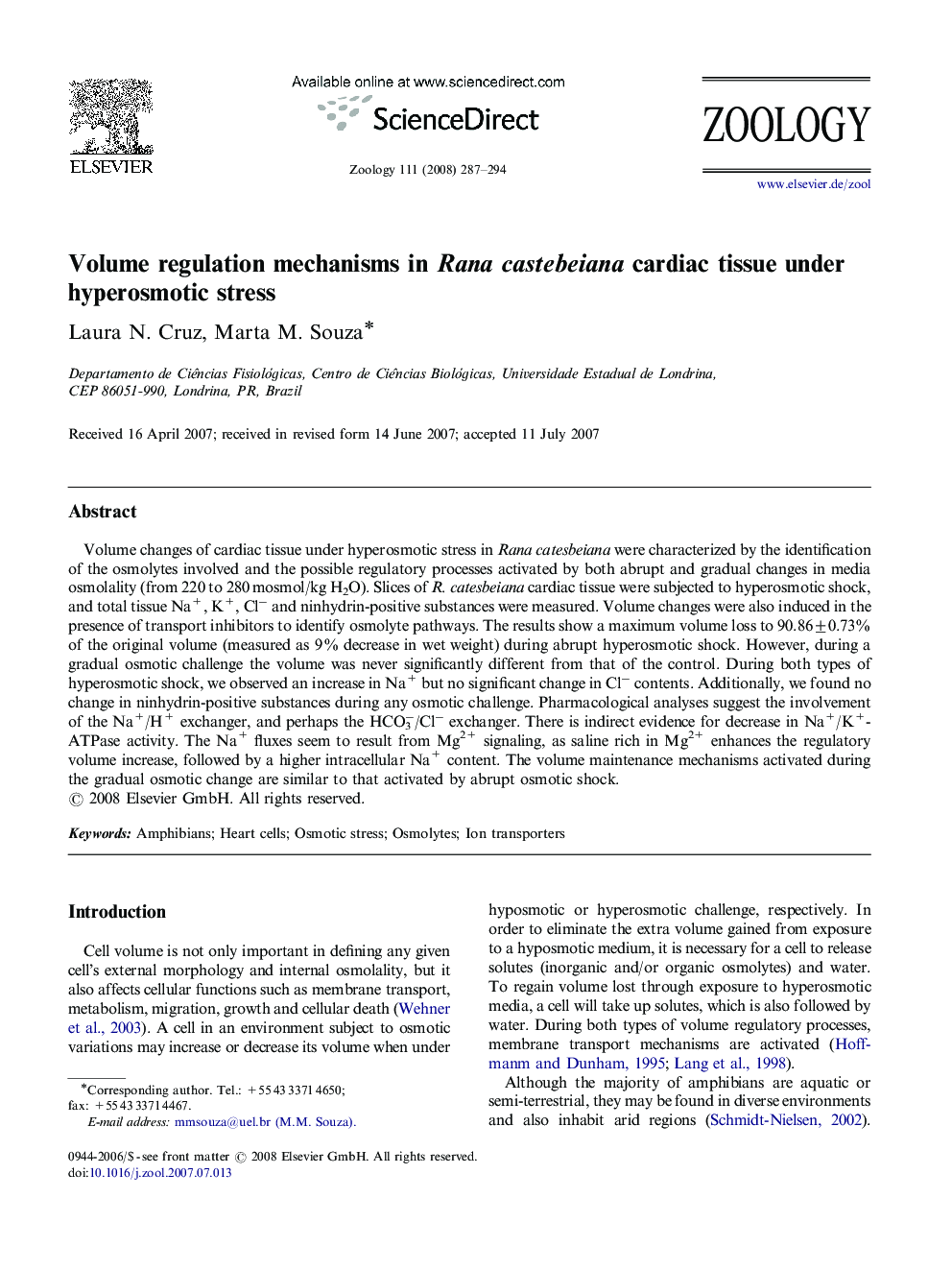| Article ID | Journal | Published Year | Pages | File Type |
|---|---|---|---|---|
| 2791332 | Zoology | 2008 | 8 Pages |
Abstract
Volume changes of cardiac tissue under hyperosmotic stress in Rana catesbeiana were characterized by the identification of the osmolytes involved and the possible regulatory processes activated by both abrupt and gradual changes in media osmolality (from 220 to 280 mosmol/kg H2O). Slices of R. catesbeiana cardiac tissue were subjected to hyperosmotic shock, and total tissue Na+, K+, Clâ and ninhydrin-positive substances were measured. Volume changes were also induced in the presence of transport inhibitors to identify osmolyte pathways. The results show a maximum volume loss to 90.86±0.73% of the original volume (measured as 9% decrease in wet weight) during abrupt hyperosmotic shock. However, during a gradual osmotic challenge the volume was never significantly different from that of the control. During both types of hyperosmotic shock, we observed an increase in Na+ but no significant change in Clâ contents. Additionally, we found no change in ninhydrin-positive substances during any osmotic challenge. Pharmacological analyses suggest the involvement of the Na+/H+ exchanger, and perhaps the HCO3â/Clâ exchanger. There is indirect evidence for decrease in Na+/K+-ATPase activity. The Na+ fluxes seem to result from Mg2+ signaling, as saline rich in Mg2+ enhances the regulatory volume increase, followed by a higher intracellular Na+ content. The volume maintenance mechanisms activated during the gradual osmotic change are similar to that activated by abrupt osmotic shock.
Related Topics
Life Sciences
Agricultural and Biological Sciences
Animal Science and Zoology
Authors
Laura N. Cruz, Marta M. Souza,
